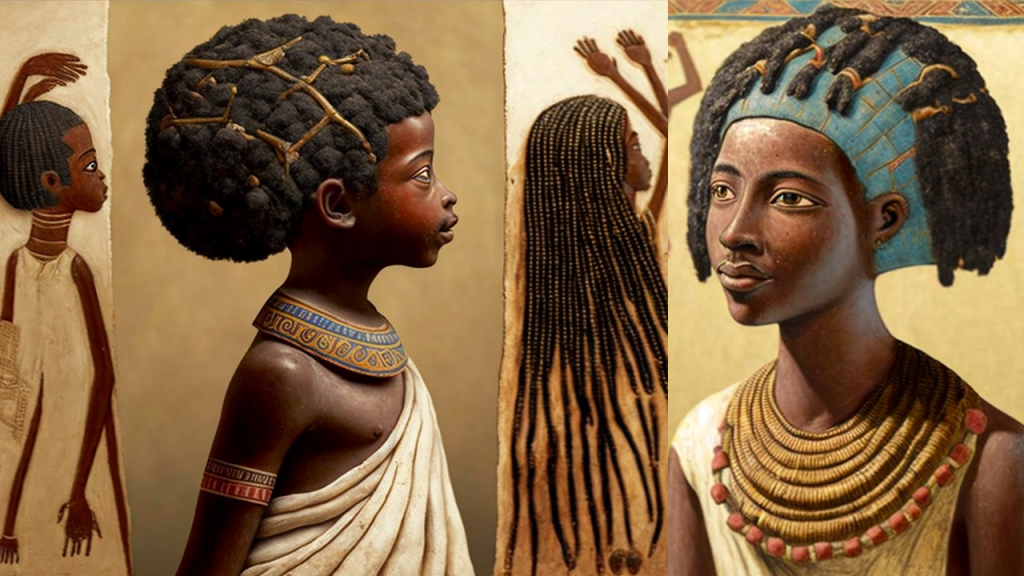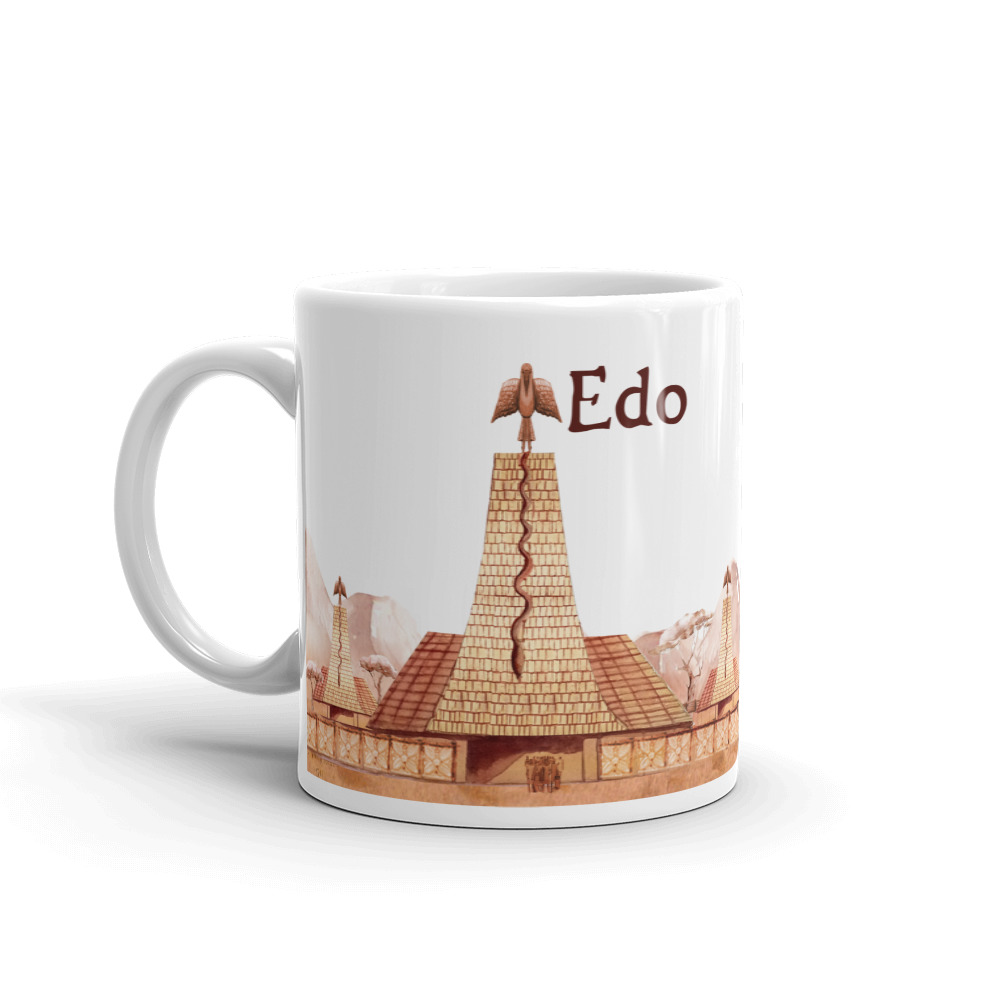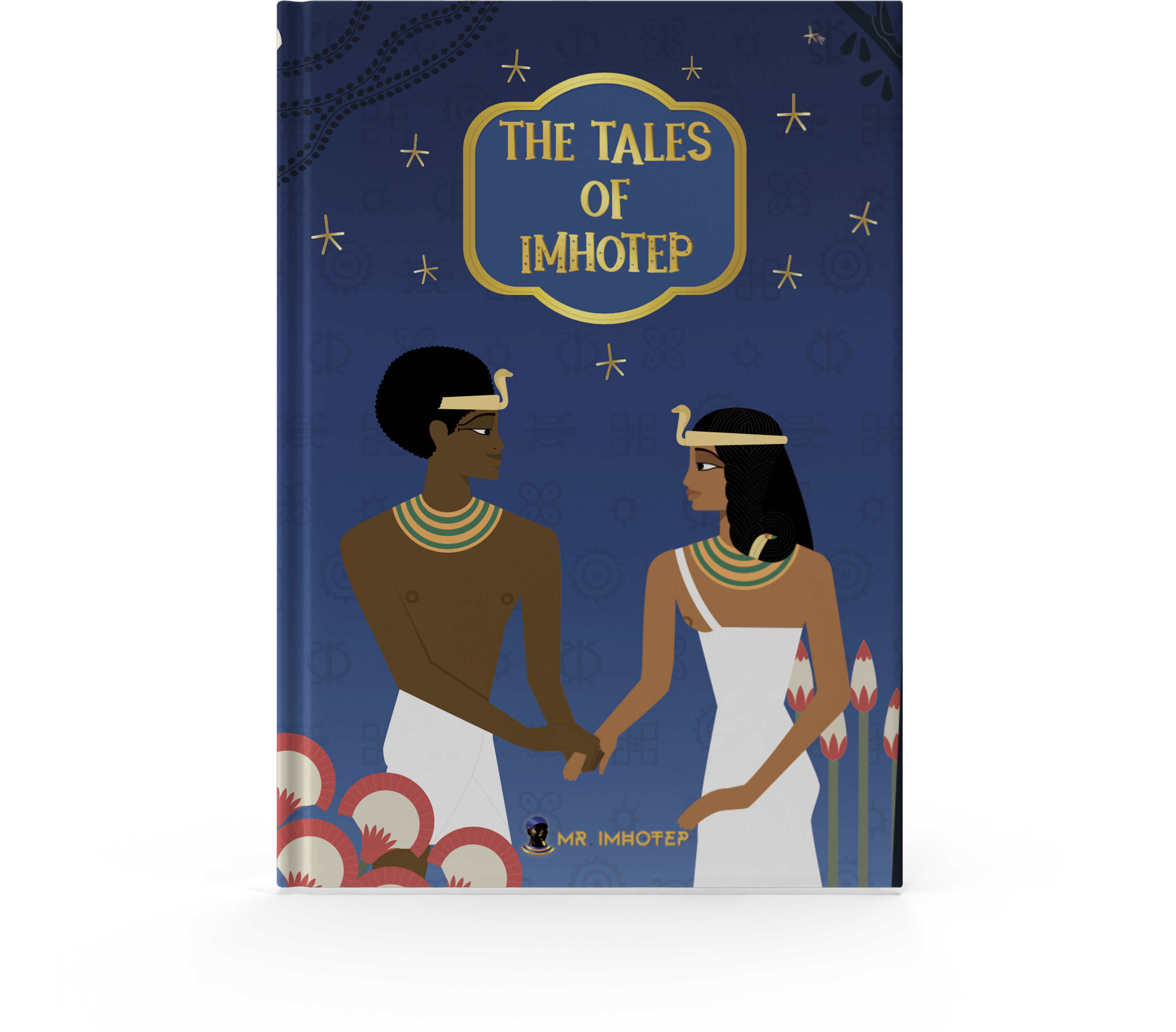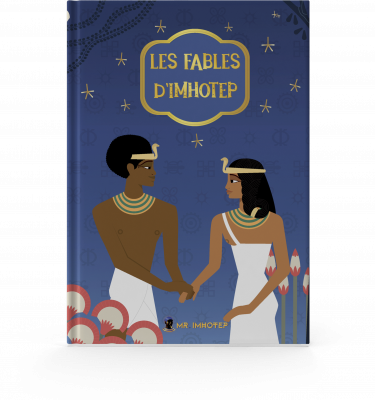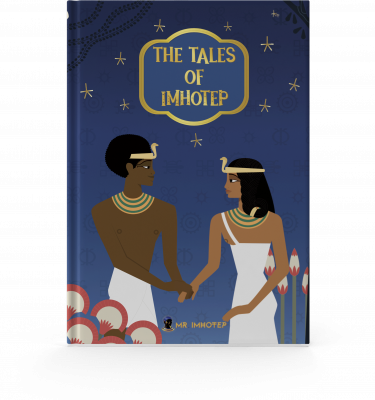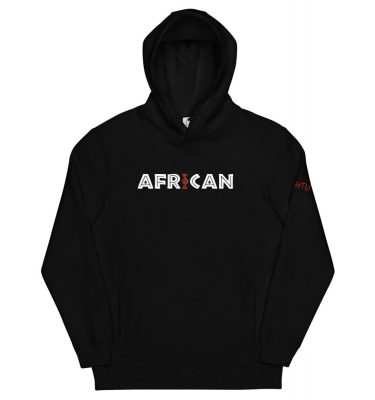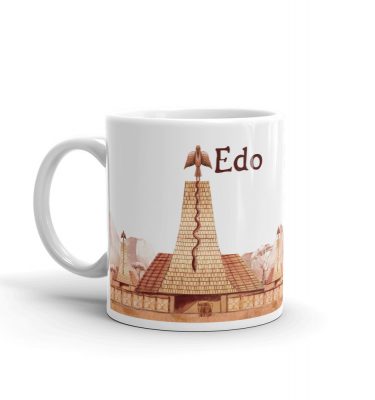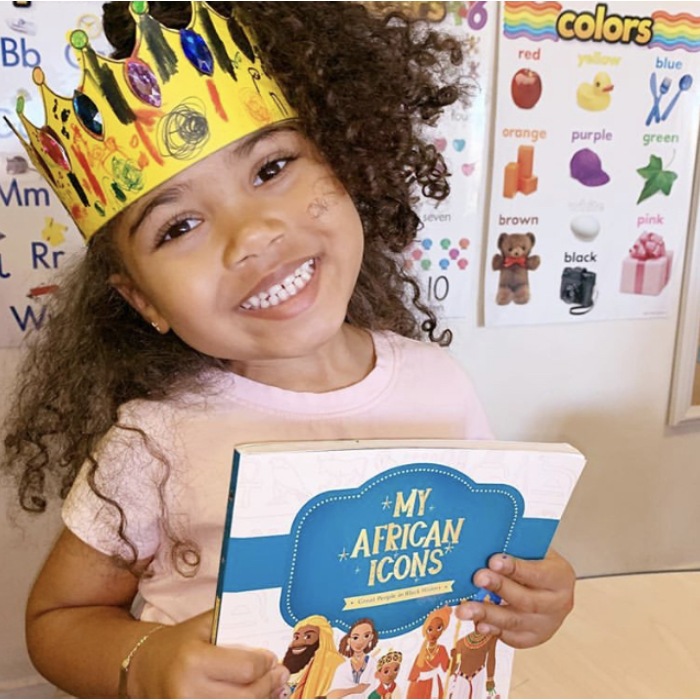For decades, the African ancestry of ancient Egyptians has been a topic of debate and controversy. Some European Egyptologists and media outlets have attempted to downplay or deny the African roots of this civilization, despite overwhelming evidence to the contrary. Physical characteristics such as skin color and facial features, as well as DNA analysis, all point to an African origin. In their own art and writing, ancient Egyptians depicted themselves with African physical characteristics.
Despite this evidence, the image of ancient Egyptians has been shaped by Hollywood productions such as Exodus: Gods and Kings and The Ten Commandments, which often portray them, particularly their rulers, as European. This distorted and biased view of history ignores the fact that the ancient Egyptian civilization developed in Africa and was influenced by other African cultures. Denying or minimizing the African ancestry of the ancient Egyptians is a form of racism and a whitewashing of history.
One way that researchers have sought to understand the true appearance of ancient Egyptians is through the study of their hair. Trichology is the science of studying hair, and it uses a trichometer to measure the cross-section of a hair shaft. This microscopic inspection can be used to identify a person’s race.

In the 1970s, Czech anthropologist Eugen Strouhal published a study in the Journal of African History that shed new light on the hair of predynastic Egyptians, or those at the root of the civilization. Strouhal used a trichometer to measure the minimum and maximum diameter of the hair shafts of predynastic Egyptians and calculated an index. He observed that predynastic Badarian Egyptians had hair indices ranging from 35 to 65. Other studies have also looked at the hair of ancient Egyptians. For example, a study of hair samples from the 18th to the 25th dynasties found an average value of 51, and German anthropologist Dr. Pruner-Bey analyzed hair samples in 1877 and found an average index of 64.4.
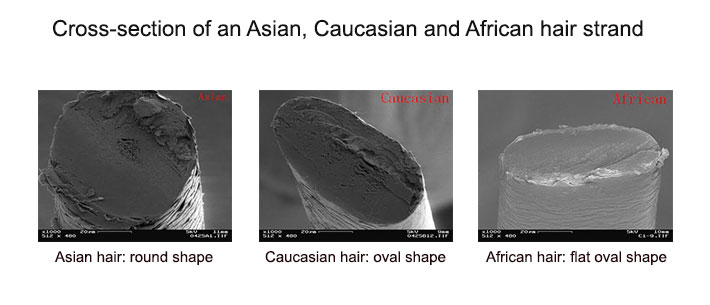
But what does all that mean?
According to Titlbach and Titlbachova, two Czech scientists, the average of modern human hair is between 60 and 110 micrometres, with 60 being the kinkiest and 110 the straightest. These averages vary by race, with European hair having an average of 71, Chinese hair having an average of 83, and Sub-Saharan African hair having an average of 60.
These are the averages of hair cross-sections according to races:
- For European hair it is 71,
- For Chinese hair it is 83,
- For Native American hair it is 77,
- For Asian Indians it is 73,
- For Other Sub-Saharan Africans it is 60.
In details:
- San, Southern Africans 55.O0
- Zulu, Southern Africans 55.O0
- Sub-Saharan Africa 60.O0
- Tasmanian (Black) 64.70
- Australian (Black) 68.00
- Western European 71.20
- Asian Indians 73.00
- Navajo American 77.00
- Chinese 82.60
When compared to these averages, it is clear that the hair of ancient Egyptians had indices that were relatively low, indicating a kinkier or curlier texture.
According to all these researchers, the hair of the predynastic Egyptians had indices ranging from 35 to 65. Knowing that the average of modern human hair is between 60 and 110 micrometers. 60 being the kinkiest, and 110 the straightest. We can see that from 35 to 65 we remain very close or even below 60 which is the average for modern Black people, and which is the kinkiest average in human hair today.
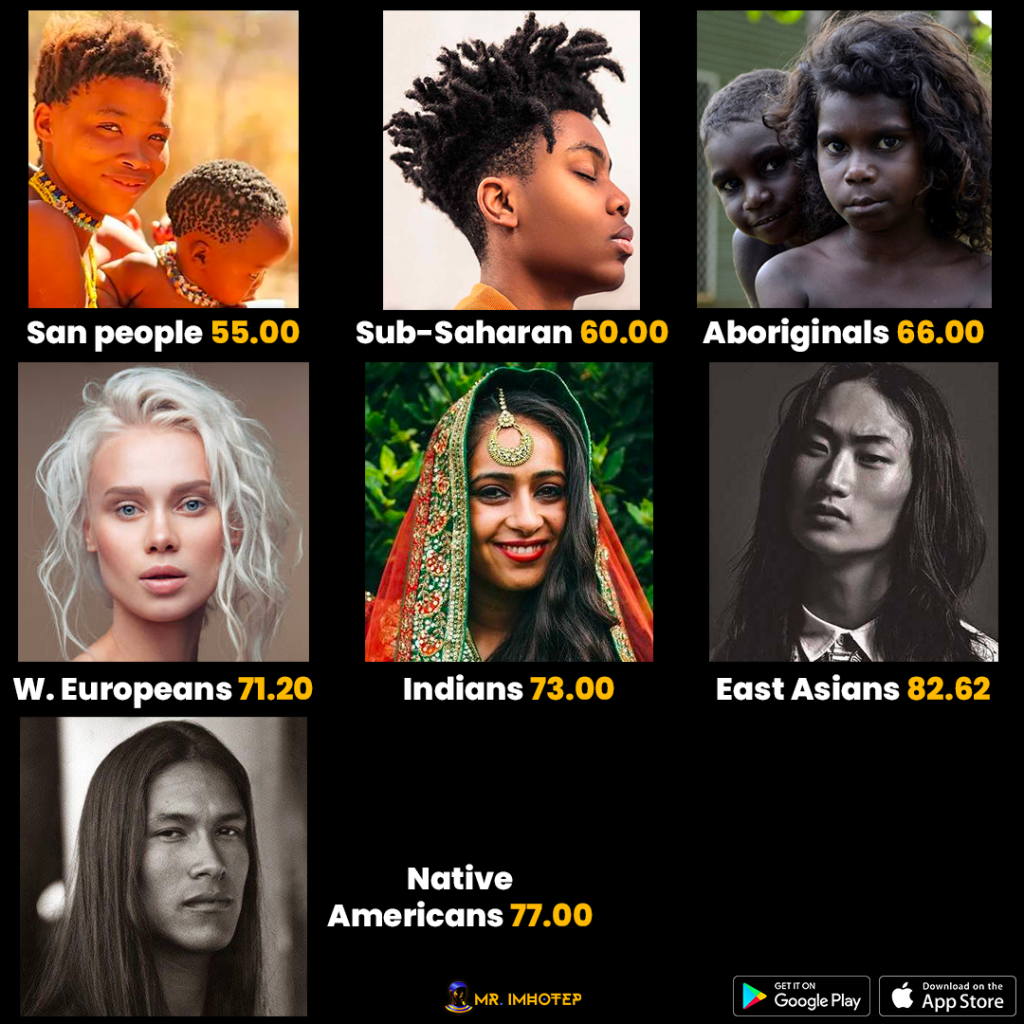
So, with 35 to 65, Ancient Egyptians are rated between Khoisan and Tasmanian, going through sub-Saharan. Both Black populations, but with different types of texture. Kinky and wavy.
In fact, Strouhal concluded that the original Kemites (ancient Egyptians) had diverse hair that ranged from wavy to kinky and was light brown to black in color. He referred to it as “Negroid hair,” suggesting intermixture. In other words, it is impossible to deny the presence of Black people in ancient Egypt. However, many people today still act as if ancient Egyptians were not Black. Kinky/Afro hair has been so demonized that its presence in ancient Egypt seems impossible to some. It is often ignored by mainstream media. Most people don’t even know that the ancient Egyptians had Afro hair, despite the multiple pieces of evidence available.
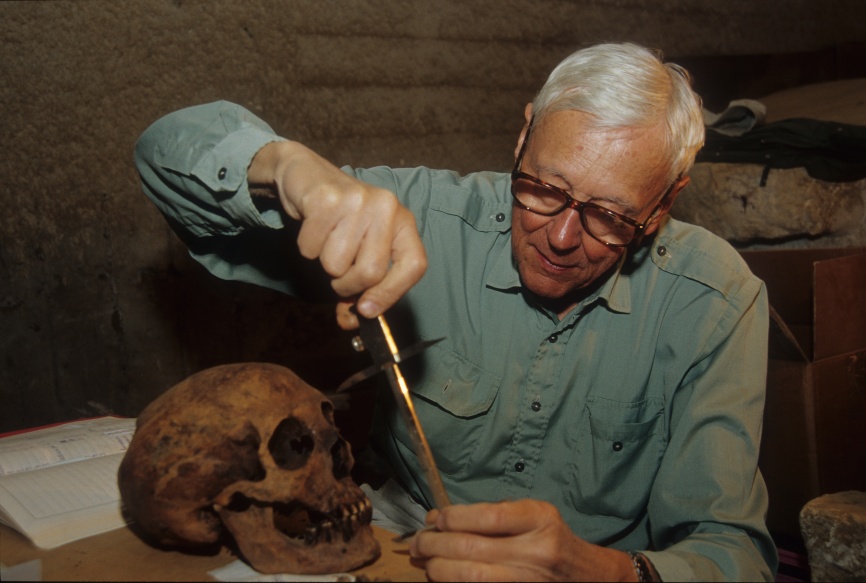
As you can see, hair can be a complex topic, and its various types and textures can sometimes be used to make assumptions about a person’s ancestry. However, as the article points out, these assumptions can be misleading. The example of Tasmanian and Australian Aboriginal communities perfectly illustrates that hair type does not necessarily reflect what we would qualify as ethnicity. More data is needed to reach that conclusion.
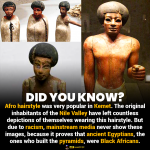
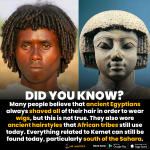
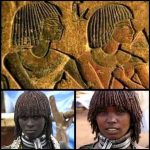
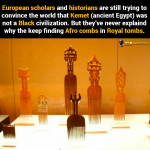
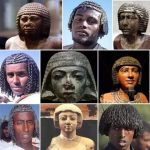
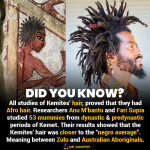
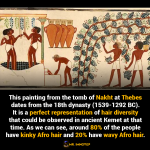
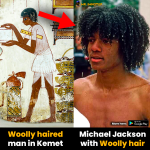
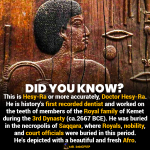
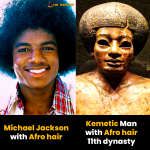
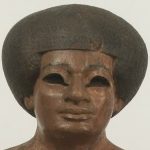
In fact, using trichology, the study of hair and scalp, it is possible to determine that two people with seemingly identical hair types may actually belong to different ethnic groups based on the average of their hair cross-sections. But this is only valid when we start distancing ourselves from kinky hair because kinky hair is currently only associated with Black Africans. I mean that when someone has kinky hair, we may assume they have some Black African ancestry. So, there is no debate about it.
This information is particularly relevant when considering the ancestry of ancient Egyptians. Throughout history, hair has been used to separate that civilization from indigenous African populations. we have all seen mummies with wavy-appearing hair. They are actually the ones put in evidence by mainstream media to separate Kemet from the rest of Africa, or more specifically from Black Africa. While those with Kinky or curly hair are hidden from the public.
However, trichology shows that not all wavy or curly hair necessarily means that the individual has some non-melanated European or Asian ancestry. I want to emphasize the concept of “non-melanated” ancestry because this is a key issue when discussing Ancient Egypt. We all have a melanated ancestry, but at some point some populations lost the melanin in their skin. Trichology shows that some hair types with wavy or curly textures are exclusive to melanated or black-skinned populations such as Africans, ancient Black Asians, ancient Black Australian Aboriginals, and other indigenous groups, while others are found only in non-melanated populations such as modern white Europeans and modern Asians (populations who are not melanated/Black skinned).
It is also important to remember that the wavy hair type associated to ancient Black Asians and Aboriginals can still be observed among African populations today. Especially in countries like Sudan, Egypt, Ethiopia, also all over West Africa, and East Africa. These individuals are not necessarily of mixed European ancestry, as is often assumed. They are Black Africans.
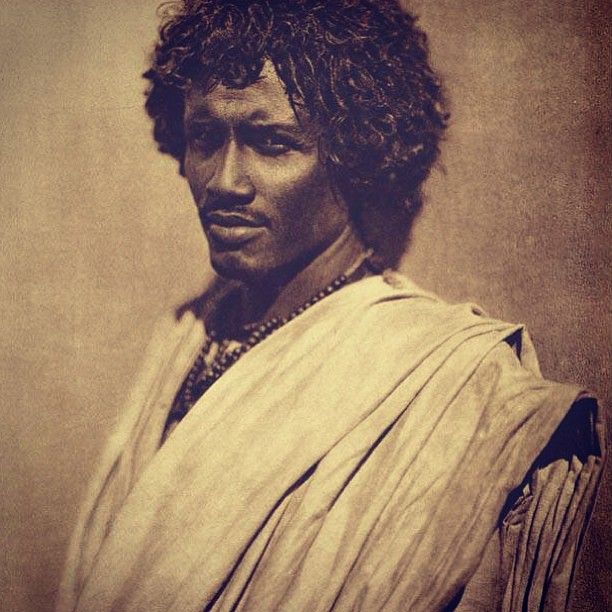
Using trichology, based on these studies, we know that the average cross-sections of hair from indigenous Egyptians located between 35 and 65 are exclusively linked to black-skinned populations (Africans, Ancient Asians, Australians or Indigenous groups), including those with both kinky and wavy/curly hair. This evidence supports the theory that ancient Egyptians were a black population. A Black population with a diversity in hair type, but yet a Black African population.
Overall, the article highlights the importance of not jumping to conclusions based on hair type alone, especially when talking about wavy hair, and the valuable insights that can be gained through the study of trichology.
References:
Hair of Egyptian Mummies – Svatava Titlbachova and Zdenek Tiltbach
The Journal of African History: Cumulative Index 1–20 (1960–1979) – Eugen Strouhal
Evidence of the early penetration of Negroes into prehistoric Egypt – Eugen Strouhal

